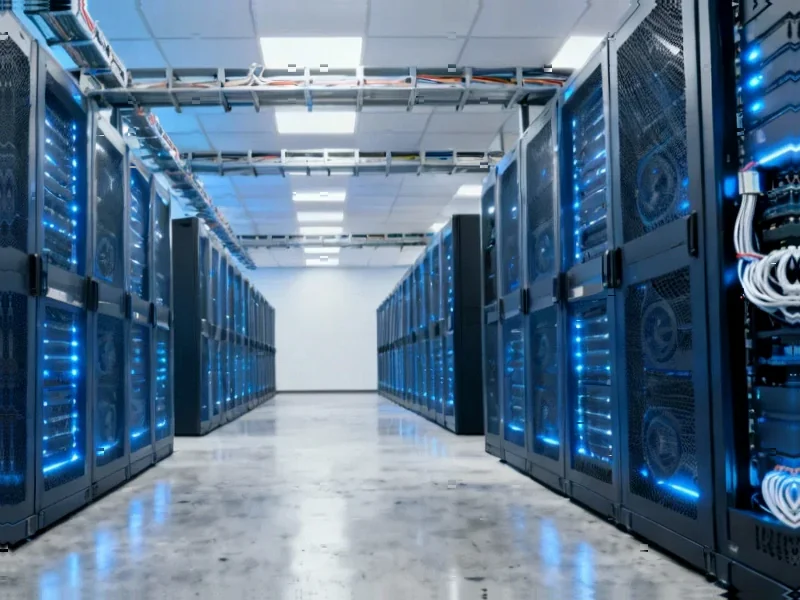According to CNBC, UBS has upgraded Cisco Systems to a buy rating with a new 12-month price target of $88 per share, representing 20% upside potential. Analyst David Vogt highlighted Cisco securing over $2 billion in AI orders for fiscal 2025, primarily from hyperscalers with two-thirds running on Cisco’s Silicon One technology. Enterprise AI orders are approaching $1 billion, up sharply from just a few hundred million dollars in the most recent quarter, positioning Cisco for sustained growth through fiscal 2026 and 2027. The analyst projects AI infrastructure demand could drive Cisco’s revenue growth to around 6% for fiscal 2026, potentially reaching $60 billion and exceeding company guidance. This strategic positioning suggests Cisco is becoming a significant player in the AI infrastructure ecosystem beyond its traditional networking roots.
The Enterprise AI Infrastructure Play
Cisco’s transformation represents a sophisticated business strategy that leverages its existing enterprise relationships to capture AI infrastructure spending. While competitors like Nvidia dominate the GPU market and hyperscalers build massive AI clouds, Cisco identified the enterprise gap. Most companies lack the expertise to build AI infrastructure from scratch, creating a massive services and integration opportunity. Cisco’s approach combines their networking expertise with AI-optimized hardware through Silicon One, essentially creating turnkey AI solutions that enterprises can deploy without becoming AI infrastructure experts themselves.
The Financial Engine Behind the Upgrade
The $2 billion AI order pipeline represents more than just incremental revenue—it signals a fundamental shift in Cisco’s revenue mix and margin potential. Traditional networking equipment faces pricing pressure and commoditization, but AI infrastructure commands premium pricing and creates sticky customer relationships. More importantly, this positions Cisco to capture the entire AI infrastructure stack revenue, from networking to compute to management software. The enterprise segment approaching $1 billion in orders is particularly significant because enterprise contracts typically include higher-margin services, support, and recurring revenue components compared to hyperscaler deals.
Navigating the AI Infrastructure Battlefield
Cisco’s strategy cleverly avoids direct competition with Nvidia in GPUs while creating complementary infrastructure. Their Silicon One technology represents a moat that traditional networking competitors like Arista Networks and Juniper struggle to match. More importantly, Cisco’s installed base of campus networking equipment creates a natural upgrade path to AI-enabled switches, essentially creating a captive market. The timing is strategic—as enterprises move from AI experimentation to production deployment, they need reliable, integrated infrastructure rather than assembling components themselves.
From Hardware Vendor to AI Solutions Provider
The most profound implication is Cisco’s evolution from a networking hardware company to an AI infrastructure solutions provider. This transition mirrors IBM’s historic transformations—surviving technological shifts by leveraging existing customer relationships into new markets. Cisco’s security portfolio, particularly next-gen products like Hypershield growing over 20%, creates additional cross-selling opportunities. The combination of networking, security, and AI infrastructure represents a comprehensive enterprise technology stack that could redefine Cisco’s market position for the next decade.
Sustainable Growth or AI Bubble?
While the AI infrastructure demand appears robust, the key question is sustainability. Hyperscaler capex growth at 20% CAGR provides strong tailwinds, but enterprise AI adoption must materialize as projected. Cisco’s risk lies in overestimating enterprise willingness to invest in dedicated AI infrastructure versus using cloud services. However, data sovereignty concerns and performance requirements for real-time AI applications create compelling reasons for on-premises AI infrastructure, playing directly to Cisco’s strengths. The upgrade cycle from existing 4K, 6K, and 9K equipment provides a predictable revenue base while AI represents the growth engine.




